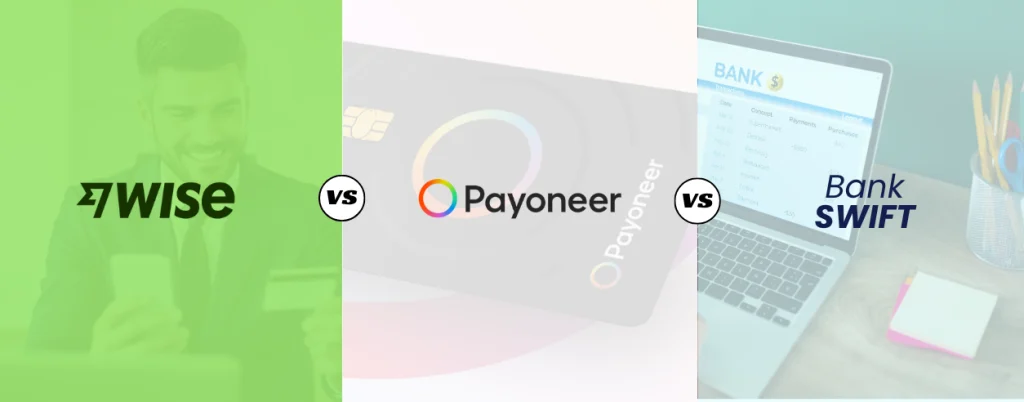When you build a business that sells beyond borders, time becomes a currency of its own. Every extra day in transit is payroll deferred, vendors waiting, a discount you cannot capture. After decades working at the intersection of exports, forex, and content strategy, here’s the blunt truth: your landed INR is determined by how fast the money settles and what happens to it while it waits—the payment settlement process and the currency exchange rates you’re exposed to during that wait.
This MOFU guide is deliberately practical. We’ll decode T+0 to T+3 in plain English, compare Wise, Payoneer, and SWIFT on settlement speed to Indian bank accounts, and expose the hidden levers that stretch or shrink timelines: cut-offs, corridors, compliance checks, and reconciliation hygiene. We’ll finish with a brand-forward conclusion that shows how a platform (built specifically for Indian exporters, freelancers, and B2B services) should operationalise speed, transparency, and documentation—without swallowing your margin in FX spread.
T+What? The timeline that runs your business
- T = the day the sender completes the transfer.
- T+0 = INR credit same business day.
- T+1 = next business day.
- T+2/T+3 = two/three business days after.
Why it matters:
- Cash flow: Faster payment settlement reduces working-capital friction and lets you ship, staff, and scale on time.
- FX drift: Longer waits = more exposure to swings in currency exchange rates; a 50–70 bps move on a large invoice can erase your margin.
- Assurance: Predictable timelines let you write cleaner payment terms and avoid awkward follow-ups with enterprise clients.
- Ops sanity: The shorter the chain, the fewer places for compliance flags and reconciliation errors.
The rails that move (or slow) your money
Every route to India ultimately lands on domestic networks. The difference is how you get to that last mile:
- Local-rail fintech (e.g., Wise)
- Collect abroad, convert transparently, payout domestically on IMPS/NEFT/RTGS.
- Result: T+0–T+1 in many corridors.
- Upside: fewer intermediaries, clearer pricing.
- Collect abroad, convert transparently, payout domestically on IMPS/NEFT/RTGS.
- Platform-collection fintech (e.g., Payoneer)
- Receive into a multi-currency wallet, then withdraw to INR via local rails.
- Result: T+1 typical, sometimes same day depending on cut-offs.
- Upside: marketplace integrations, consolidated receipts.
- Receive into a multi-currency wallet, then withdraw to INR via local rails.
- Bank wire via SWIFT
- Sender bank → correspondent(s) → receiving bank in India.
- Result: T+2–T+3 is common; faster if everything aligns, slower if it doesn’t.
- Upside: universally accepted for large B2B payments.
- Sender bank → correspondent(s) → receiving bank in India.
Speed comparison (what your finance team actually experiences)
| Method | Typical Settlement to Indian Bank | FX Transparency | Admin Weight | Best Use Case |
| Wise | T+0–T+1 | High (near mid-market; explicit fees) | Low | SMEs, freelancers, agencies prioritising speed & clarity |
| Payoneer | T+1 (often same day) | Medium (conversion spread) | Low–Medium | Marketplace sellers, multi-client receivables, recurring flows |
| SWIFT | T+2–T+3 (sometimes more) | Low (bank spreads & lifting fees) | Medium–High | Large B2B invoices where the buyer mandates bank-to-bank |
Rule of thumb: If speed and transparency win, local-rail fintechs dominate. If a buyer insists on a bank wire for internal policy reasons, negotiate value-date aligned payment terms to offset slower credit.
Hidden levers that turn T+1 into T+3 (or vice-versa)
1) Cut-off choreography
- Sender side: Miss a 3–5 p.m. window and you’ve effectively added a day.
- Receiver side: Indian bank posting cycles differ; Fridays and pre-holiday afternoons are where good intentions go to die.
Play: Get clients to initiate before their local cut-off, not “by end of day.”
2) Corridor & funding method
- Card/instant funding → faster to Wise; slow ACH → slower.
- Payoneer sweeps daily; your “T clock” starts when you hit withdraw.
Play: Standardise client instructions by corridor; publish them in your SOW.
3) Compliance friction
- Purpose-code errors, mismatched beneficiary names, incomplete invoice details = manual holds in the banking settlement process.
Play: Pre-map services to the correct RBI purpose codes; build a checklist into onboarding.
4) FX posture
- “Free transfer” with a poor rate is not free—basis points beat fee waivers.
Play: Adopt a policy on acceptable currency exchange rates and spreads. Measure partners monthly.
5) Reference hygiene → clean books
- Unclear references = reconciliation limbo.
Play: One invoice → one payment reference → one ledger match. Automate transaction reconciliation in your accounting stack.
Wise: Local rails, real speed (often T+0–T+1)
Wise’s advantage is architectural: it avoids the molasses of correspondent banking by converting at transparent rates and paying out domestically. For India, that typically translates to same-day or next-day credits.
- Why it’s quick: fewer hops, programmatic checks, and domestic disbursal.
- What finance feels: faster credits, clear fees, and easy export evidence (UTR, EBRC/FIRC support).
- When to use: retainers, milestone payments, recurring invoices where predictability outranks ritual.
SEO lens: If your audience searches real time payments system, payment settlement process, and international payment methods, Wise’s local-rail story aligns with all three.
Payoneer: Platform collections, dependable T+1 rhythm
Payoneer shines where you collect from multiple clients/marketplaces, then sweep to INR.
- Why it works: daily withdrawal cycles, local payouts, marketplace plugs.
- What finance feels: a steady T+1 cadence, consolidated EBRCs, dashboard-friendly transaction reconciliation.
- Trade-off: convenience for some conversion spread; check your true-cost stack.
When to use: agencies, freelancers, SaaS implementers balancing many mid-sized tickets.

SWIFT: Universal, sturdy—rarely swift
Bank-to-bank SWIFT is institutional and everywhere. It’s also batchy and daylight-dependent.
- Why it lags: correspondent chains, manual checks, and opaque FX outcomes at conversion.
- What finance feels: T+2–T+3 as the norm; occasional + fees that appear only after credit.
- When to use: very large B2B invoices where the buyer insists on wires; regulated sectors with rigid AP playbooks.
Pro move: bake payment terms that commit the buyer to initiate earlier (so value date aligns with your cash plan), or share the cost of an expedited route.
Playbook: How Indian exporters make T+1 their habit
- Publish a payments page
Clear instructions by corridor, cut-off expectations, mandatory references, and preferred international payment methods. - Codify purpose codes
Standard library for service lines (e.g., IT, consulting, R&D). Treat it like a SKU list inside your payment settlement SOP. - Automate reconciliation
Map incoming references → invoices. Your books should “click” into place; the payment settlement process should end with a green tick in finance, not a spreadsheet vigil. - Measure FX, not just fees
Keep a run-sheet of partner spreads vs mid-market currency exchange rates. If you don’t measure, you’ll pay for it in silence. - Contract for speed
Write settlement expectations into payment terms: value date, initiation window, who bears intermediary costs, and what happens if timelines slip.
FAQ (the ones finance keeps asking)
Q: Is T+0 realistic for India?
Yes—on many corridors with local-rail fintechs, especially when funding is instant and cut-offs are met. Treat T+0 as a bonus and T+1 as the baseline.
Q: Why do SWIFT wires vary so much?
Each extra intermediary adds a timetable and a potential compliance touch. Weekends and time zones amplify slippage in the banking settlement process.
Q: How do I speed up FIRC/EBRC?
Get purpose codes right at initiation, keep remitter details clean, and choose routes that auto-generate digital certificates. Fast payment settlement is useless if evidence arrives late.
Q: What’s the fastest route for many small payments?
Platform collections (Payoneer-style) with daily sweeps, or Wise if clients can pay directly on local rails.

Conclusion: Fast money, clean evidence, fair FX—how HiWiPay operationalises the lot
Wise proved that local rails can deliver T+0–T+1. Payoneer made multi-client collections painless. SWIFT remains the corporate default when policy says “bank-to-bank,” even if that means T+2–T+3. The market’s message is unmistakable: Indian exporters want speed with compliance, transparent currency exchange rates, and transaction reconciliation that doesn’t hijack month-end.
That is precisely the gap HiWiPay was built to close. Engineered specifically for India’s exporters and B2B trade businesses, HiWiPay brings the velocity of modern rails to an exporter-grade payment settlement process—without the sleight-of-hand in FX.
- Keep more INR
Consistently low FX mark-ups vs banks and aggregators, with no hidden forex margins. Your rate is your rate—visible, defensible, and competitive. - T+1 as muscle memory
Receive in ~24 hours on most corridors, supported by live status—our real time payments system view shows progress from request to credit. - Compliance, first mile
RBI-aligned flows with guided export document suggestions (purpose codes, e-FIRC/e-BRC). The banking settlement process ends with clean evidence, not a paper chase. - Collect globally, settle locally
Free global virtual accounts so clients pay “like a local”; we settle to your Indian current account—ideal for modern international payment methods. - Books that close themselves
Match payments with invoices automatically; line-item transaction reconciliation trims hours off month-end. - Operate without the branch
A secure, mobile app to move funds on the go; one-to-one support when timelines are tight and templated replies won’t do. - Built by a payments lifer
Led by Dewan Neralla (who scaled Atom Technologies and NTT DATA Payments), the stack blends enterprise-grade security with SMB practicality.
If this comparison helped you weigh Wise vs Payoneer vs SWIFT on settlement speed, the next step is to institutionalise speed, fairness, and documentation. HiWiPay was designed to do exactly that—fast payment settlement, exporter-first compliance, and FX that respects your margin—so your payment terms become a competitive edge, not a risk factor.
Ready to make T+1 your default? Switch to HiWiPay and turn every cross-border receipt into a faster, cleaner, more profitable close.



